Canon PowerShot SX1 IS
-
-
Written by Gordon Laing
Canon PowerShot SX1 IS resolution comparison
Canon PowerShot SX1 IS results continued…
| Support this site by shopping via these links | |||||||||||||||||||||||||||||||||||||||||||
 |
To measure and compare the Canon PowerShot SX1 IS’s resolving power we photographed the Enhanced Digital Camera Resolution Chart with it and a number of rival compacts, each using their best quality JPEG and default image tone and sharpening settings. Each camera was tested at every aperture setting and the best result selected for this page. The crops are taken from the original images, saved as High Quality JPEGs in Photoshop CS2 and presented here at 100%. Each number represents 100 lines per picture height (lpph), so a figure of 20 means a resolution of 2000 lpph. |
In terms of resolving power, the Canon PowerShot SX1 IS at 15mm f4 delivers 2150 and 2175 lpph of horizontal and vertical resolution respectively. The vertical figure is a fraction higher than measured with the SX10 IS, but the horizontal resolution is the same. Both models resolve comfortably more than the 1750 and 1900 lpph measured for their joint predecessor the PowerShot S5 IS, although unsurprisingly lower than the PowerShot G10 which sports 50% more pixels in total. Compared to the Panasonic Lumix FZ28, the SX1 IS scores roughly the same. The Canon result is cleaner and sharper, but in terms of measured detail, there’s little in it here. You may wish to check our Canon PowerShot SX10 IS review which includes additional real-life comparisons against the FZ28. Like most compacts and superzooms, diffraction is an issue for the SX1 IS. At the focal length tested, the best result was measured at the maximum aperture of f4. As the aperture was closed, the resolution steadily decreased until we measured 1600 lpph at f8. Most compacts with smaller sensors and high resolutions suffer from the same effect, so for the maximum resolution (albeit also the smallest depth of field), always try and shoot with the SX1 IS with its aperture wide open. In March 2009, Canon released a firmware update which equips the SX1 IS with RAW capabilities, so to see how these compare with in-camera JPEGs in terms of resolution, scroll to the bottom of this page. Alternatively, if you can’t wait to compare noise levels, check out the camera’s performance across its sensitivity range in our Canon SX1 IS High ISO results page. |
Canon PowerShot SX1 IS |
Canon PowerShot SX10 IS | |
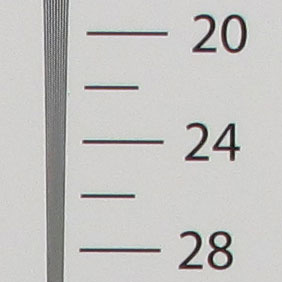 | 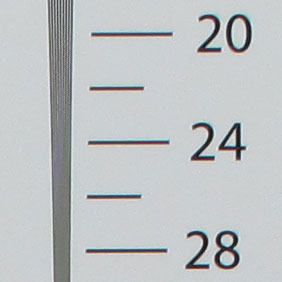 | |
2150 lpph, 5-100mm at 15mm, f4, 80 ISO |
2150 lpph, 5-100mm at 15mm, f4, 80 ISO | |
Panasonic Lumix DMC-FZ28 |
Canon EOS 450D / XSi with EF-S 18-55mm IS | |
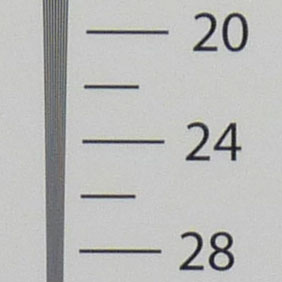 | 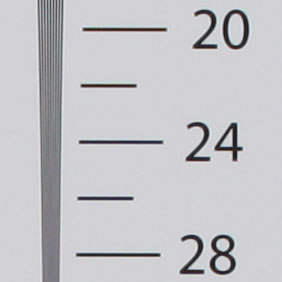 | |
2150 lpph, 4.8-86.4mm at 15mm, f4, 100 ISO |
2200 lpph, EF-S 18-55mm IS at 35mm, f8, 100 ISO |
Canon PowerShot SX1 IS |
Canon PowerShot SX10 IS | |
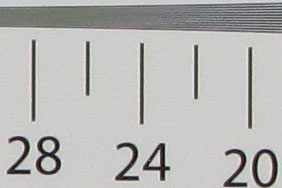 | 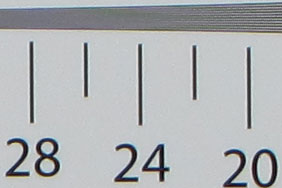 | |
2175 lpph, 5-100mm at 15mm, f4, 80 ISO |
2150 lpph, 5-100mm at 15mm, f4, 80 ISO | |
Panasonic Lumix DMC-FZ28 |
Canon EOS 450D / XSi with EF-S 18-55mm IS | |
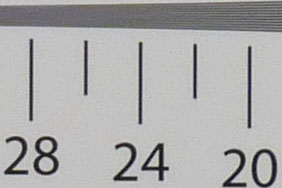 | 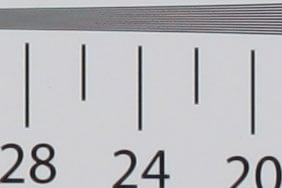 | |
2150 lpph, 4.8-86.4mm at15xmm, f4, 100 ISO |
2225 lpph, EF-S 18-55mm IS at 35mm, f8, 100 ISO |
Canon PowerShot SX1 IS Studio resolution: JPEG versus RAW
In March 2009, Canon released version 2.0.0.0 of its PowerShot SX1 IS firmware, which equips the camera with RAW recording capabilities. Brand new models (along with all those purchased in North America) should come with the software pre-installed, but existing owners can download the update here.
To test these new capabilities, we updated a sample SX1 IS with the new firmware, then reshot our main outdoor composition in its RAW plus Large JPEG mode; this would allow us to directly compare images created from exactly the same data. Below are crops taken from the in-camera JPEG file alongside the RAW version, processed in Canon’s supplied Digital Photo Professional (DPP) 3.6 software using the default sharpness of 7.
The processed RAW file is better-defined than the in-camera JPEG, revealing details which weren’t visible on the latter, although sadly these aren’t necessarily desirable ones. The graininess we saw on the previous page has returned here, and much of what you’re seeing is a difference in sharpening, although to be fair, there is information at very high frequencies on the RAW version which is irretrievable on the JPEG.
The bottom line though is artefacts kick-in at the same point and limit the measured resolution on both the JPEG and RAW files to essentially the same figure. So the benefits of shooting in RAW on the SX1 IS are limited to greater control over White Balance, Noise Reduction and export compression. Sadly there wasn’t any additional spatial or tonal detail that we could measure, although again, the ability to quickly and easily adjust the settings mentioned remains useful.
Now let’s check out the camera’s performance at different sensitivities in our Canon PowerShot SX1 IS noise results page.
Canon PowerShot SX1 IS: JPEG |
Canon PowerShot SX1 IS: RAW | |
 | 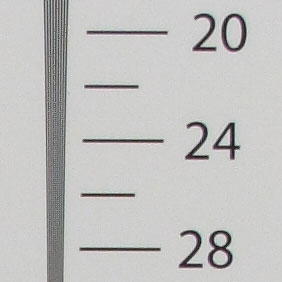 | |
2150 lpph, 5-100mm at 15mm, f4, 80 ISO |
2150 lpph, 5-100mm at 15mm, f4, 80 ISO |
Canon PowerShot SX1 IS: JPEG |
Canon PowerShot SX1 IS: RAW | |
 | 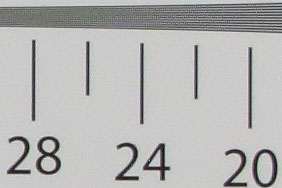 | |
2175 lpph, 5-100mm at 15mm, f4, 80 ISO |
2175 lpph, 5-100mm at 15mm, f4, 80 ISO |




